
Feel free to add tags, names, dates or anything you are looking for
.png)
.png)
In the history of Georgian fine art, two waves of abstraction emerged. The first wave became prominent throughout the 1950s and 1960s as a form of protest against post-Stalinist art. Representatives of the abstract style or school include: Aleksandre Bandzeladze, Jibson Khundadze, Temo Japaridze and Guram (Khita) Kutateladze. Representing the second wave of the 1980s and 90s was Gia Edzgveradze, Iliko Zautashvili, Irakli Parjiani, Luka Lasareishvili, Levan Laghidze, and Yura Berishvili. Artists from both waves sought to use abstraction to liberate Georgian painting from the monotonous and stylistically uniformity imposed by Soviet art, filling the gaps left by Soviet ideology. In communist realist art, abstraction was associated with Western and bourgeois aesthetics. David Kakabadze, the founder of Georgian abstraction, suffered greatly as a result of being labeled a formalist artist. As a result, his example became a model and a reference point for Georgian artists pursuing abstraction. The introduction of the abstract style to both groups of artists occurred anachronistically, which means that the Georgian mainstream did not correspond with the Western art scene at the time; by the time the trend formed in Georgia, it was already out of fashion in the West. Georgian abstraction was primarily shaped by protests against Soviet art, a synthesis with medieval wall painting that evolved into a reflection of national identity, and the impact of the Soviet monumental school on generations of the 1980s and 1990s, particularly in mosaic and stained glass. Based on the peculiarities described, Georgian abstract painting emerged in a very different way than Western abstract art; seeing them united only by a kind of “prophetic” and socio-political impasse.
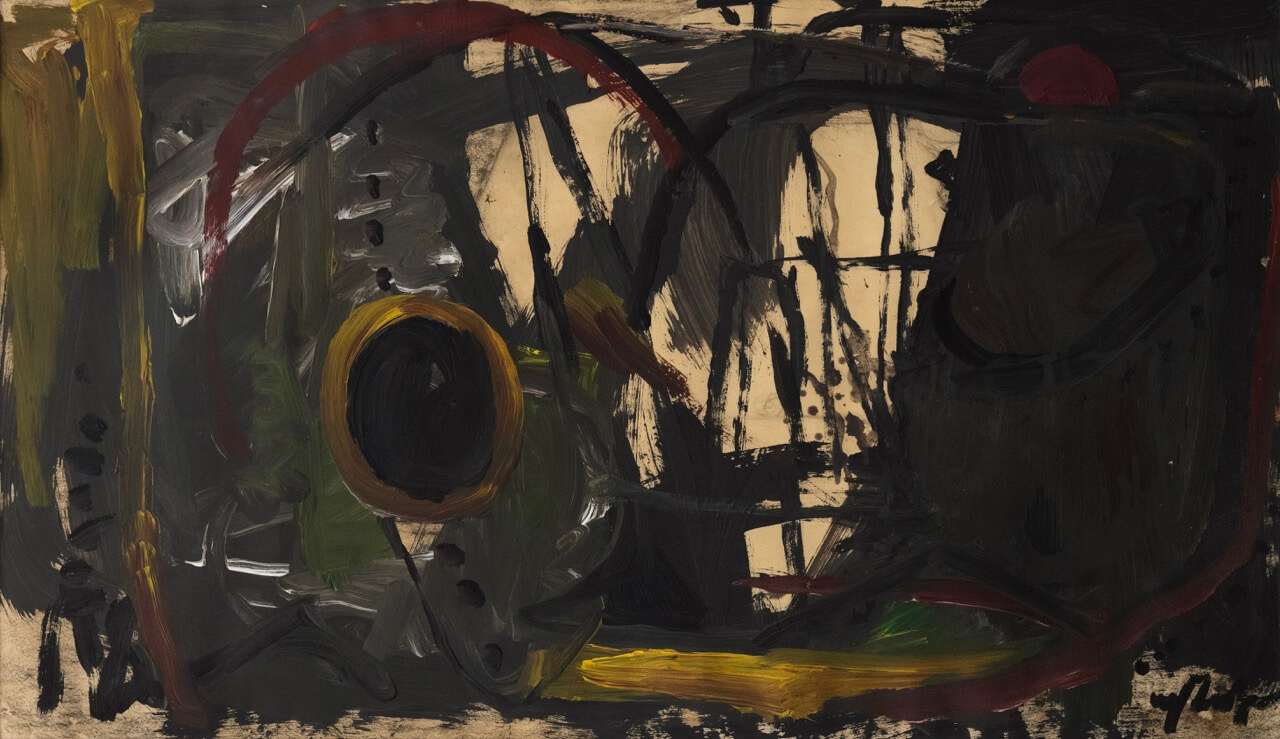
Ushangi Khumarashvili ‘Abstraction’. Paper, mixed media. 50x85. 1990. This work is part of ATINATI Private Collection
One of the most prominent representatives of abstract art, Wassily Kandinsky, said “The more frightening the world becomes…the more art becomes abstract.” In Europe of the 1910-20s, abstract or objectless art served as a “preface” to the First and Second World Wars, while in America of the 1940-50s, it was a post-traumatic condition caused by WWII, which also played a transitional role in postmodernism. In Georgia, abstraction emerged as a post-traumatic response to Stalinist art and as a “prophetic” expression of the country’s independence, against the backdrop of the civil war.
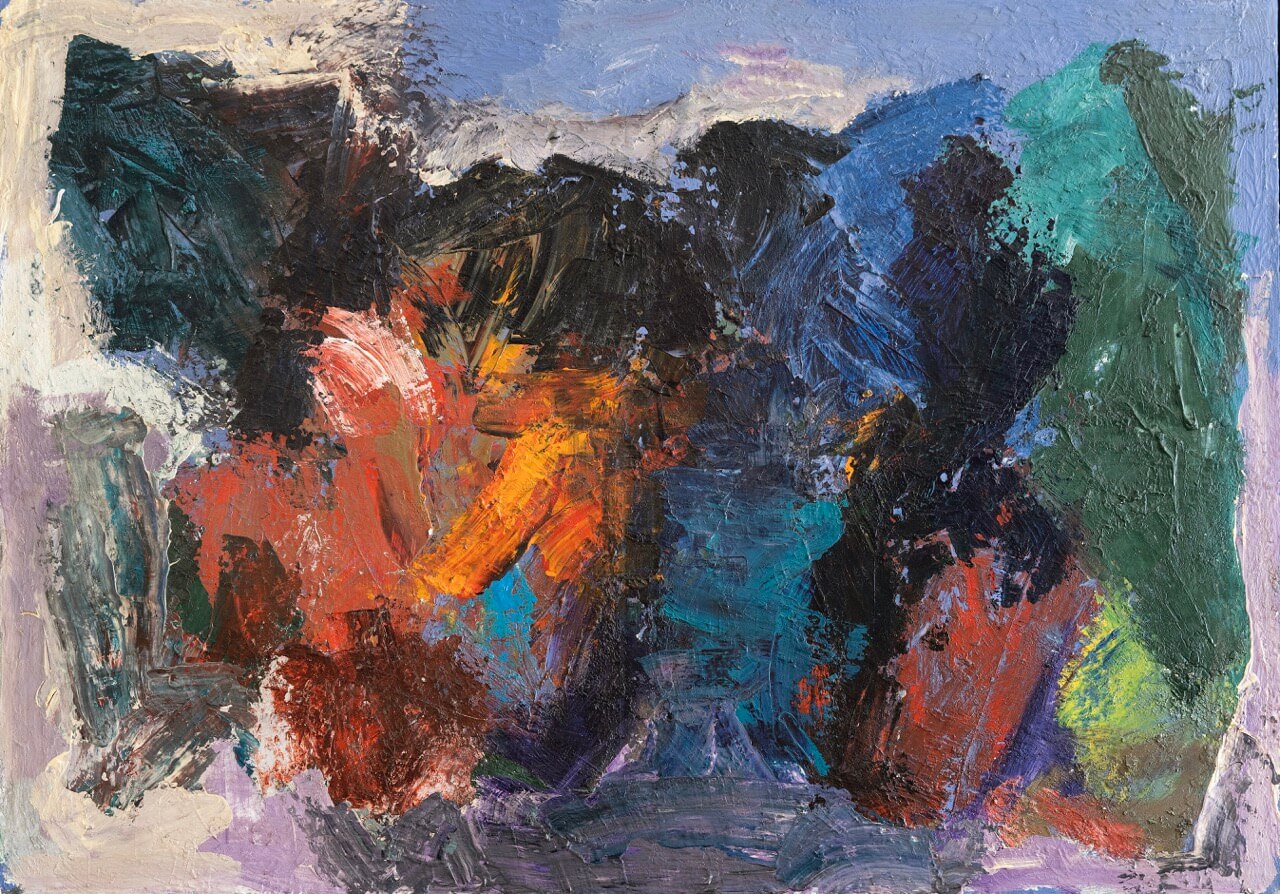
Ushangi Khumarashvili ‘Abstraction’. Canvas, oil. 105x145. 2006. This work is part of ATINATI Private Collection
_Large.jpeg)
Ushangi Khumarashvili ‘Abstraction’. Canvas, oil. 105x145. 2006. This work is part of ATINATI Private Collection
Ushangi (Khuma) Khumarashvili was a partisan of Georgian abstraction. For him, abstract painting was a philosophical study of life; he experimentally attempted to portray realism through generalized images of everyday life. Khumarashvili was not a representative of this style or school; he did not associate abstraction with political protest or align himself with the aforementioned Georgian artists. Instead, he refined a painting technique which became his psychosomatic hall-mark.
Ushangi Khumarashvili was born in Dedoplistskaro in 1948. He studied at the Tbilisi Academy of Arts from 1967 to 1973, specializing in Theater Painting within the Faculty of Painting. After completing his studies, he worked at the Telavi Drama Theater from 1974 to 1980. In 1988, Khumarashvili became a member of the Union of Artists of Georgia. His first exhibition was held at the Telavi Exhibition Hall. This was followed by a solo exhibition at the National Picture Gallery in Tbilisi in 1994. In 1996, he participated in an exhibition of contemporary art, and in 1996 and 2006, in the International Biennale. In 2019, his milestone anniversary exhibition "Ushangi Khuma 70" was held at the Dimitri Shevardnadze National Gallery. Khumarashvili's work spans multiple mediums, including painting, collage, graphics, assemblage, performance, art objects, and video art. He collaborated with a number of local galleries, among them Baia Gallery, Gala Gallery, TBC Gallery, TMS Gallery, and N Gallery. He passed away in Tbilisi in 2023.
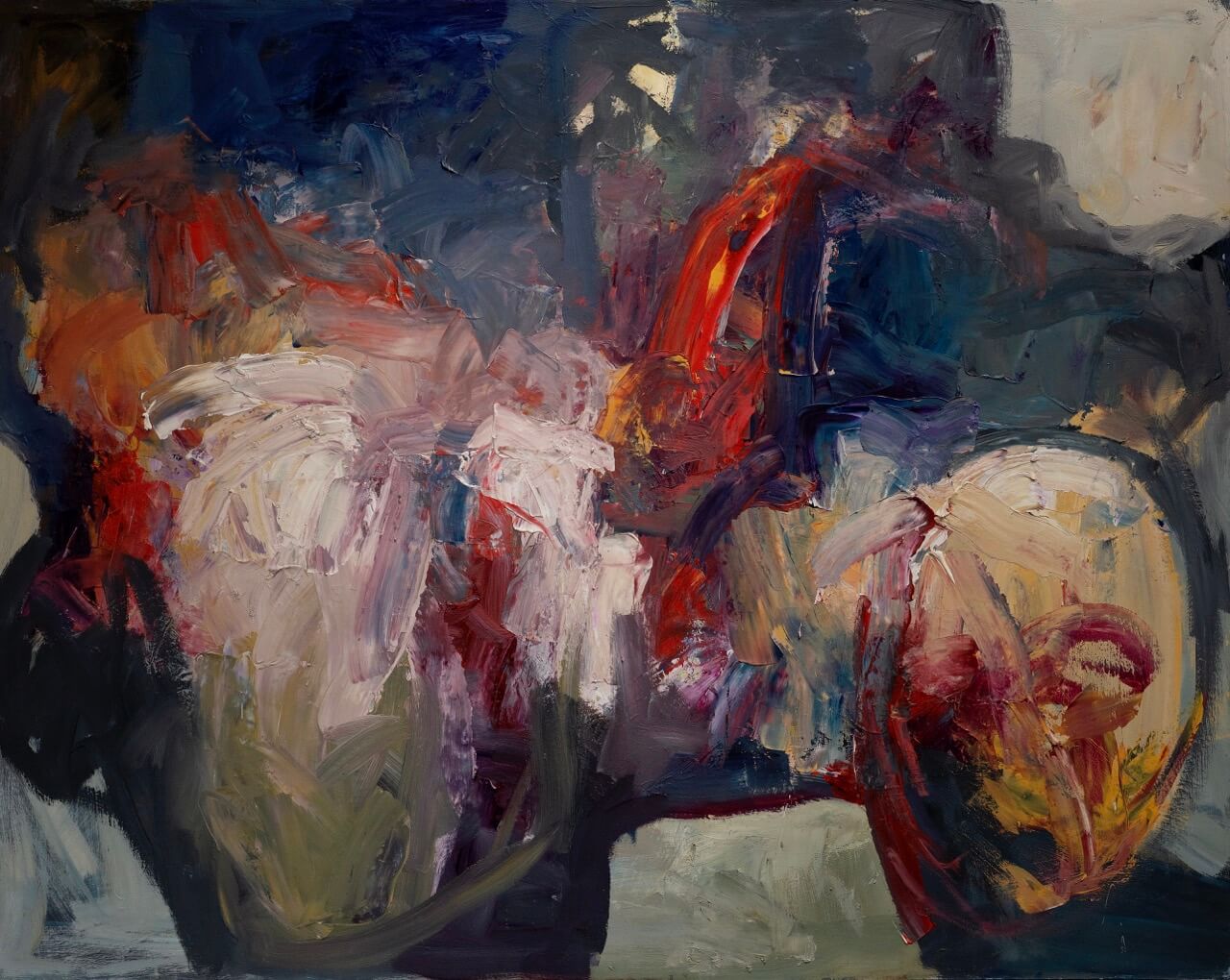
Ushangi Khumarashvili ‘Abstraction’. Canvas, oil. 160x200. 2012. This work is part of ATINATI Private Collection
Khumarashvili's diary plays an essential role in comprehending his artistic peculiarities. Extracts from his personal diary are inseparable parts of the artist's paintings. Timeless, wordless, and impersonal paintings seem to picture the extracts from his diary, which in turn present conceptualizations of his paintings. The synchronization of the diary and painting transforms the nature of classical, restrained abstract art, revealing that objectless imagery can transcend realism and become a meta-reality. Ushangi's diary extracts are irrational and reflexive, containing both chaos and order, much like the interplay of light and shadow. The quotes are both intensely intimate and public. Khumarashvili’s individual world reflects Georgian society.
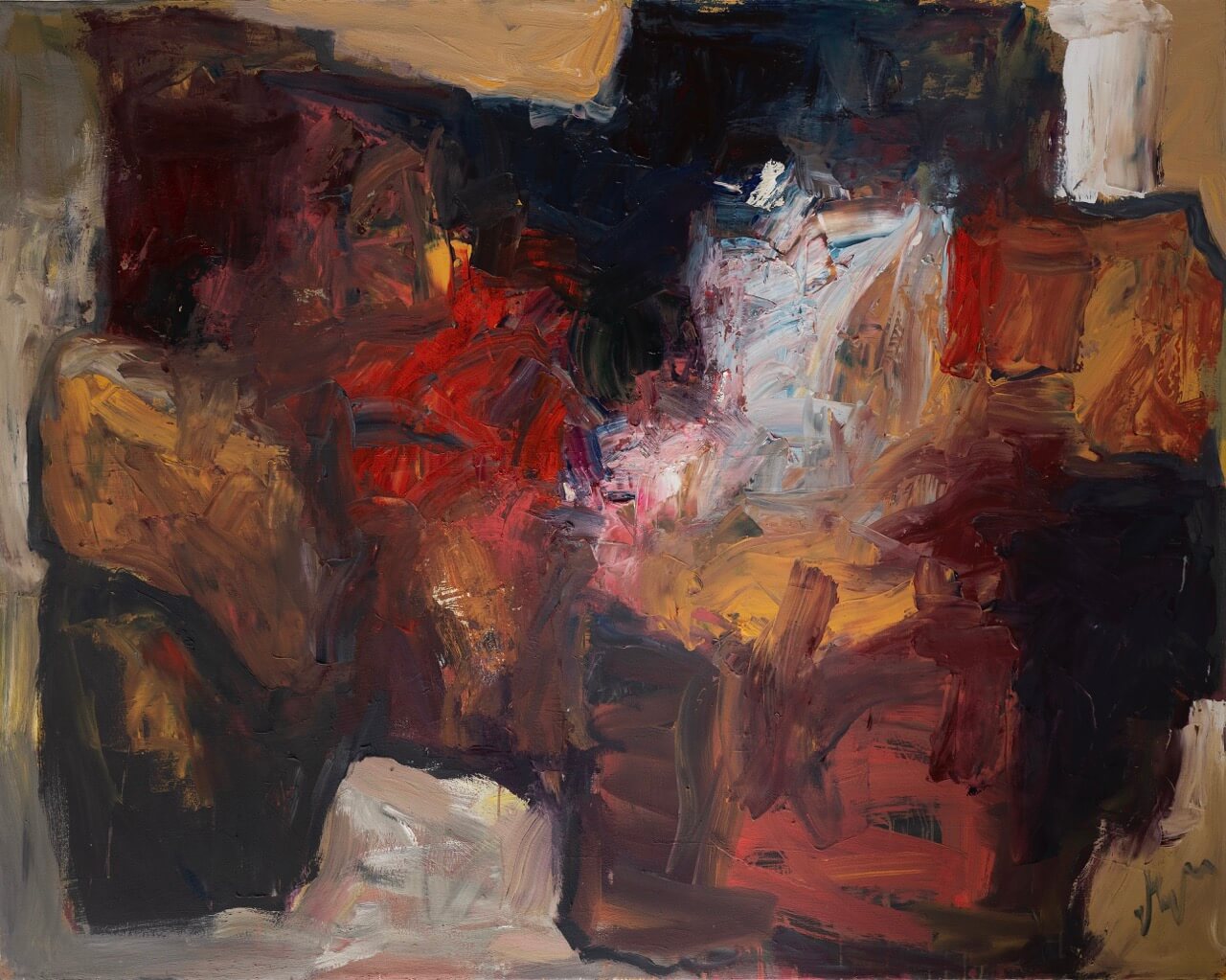
Spot abstraction plays a key role in the dramaturgy of the artist's paintings, which are characterized by brutalism and emotion. His works feature rough trajectories, the merging of multiple spots, partitioned spot arrangements, and the dynamic conflict between the background and the spot, as well as abstract motifs, polycentrism, achromaticity, and expressive figurative imagery, set against an abstract background. Ushangi’s style incorporates various stylistic and technical elements found in Western art movements, such as German neo-figurativism, tachisme, art brut and abstract expressionism. His pictorial-graphic works, in terms of aesthetic and stylistic nuances, are marked in the constellation of the following artists: Jean Fautrier, Franz Kline, Pierre Soulages, and Philip Guston.
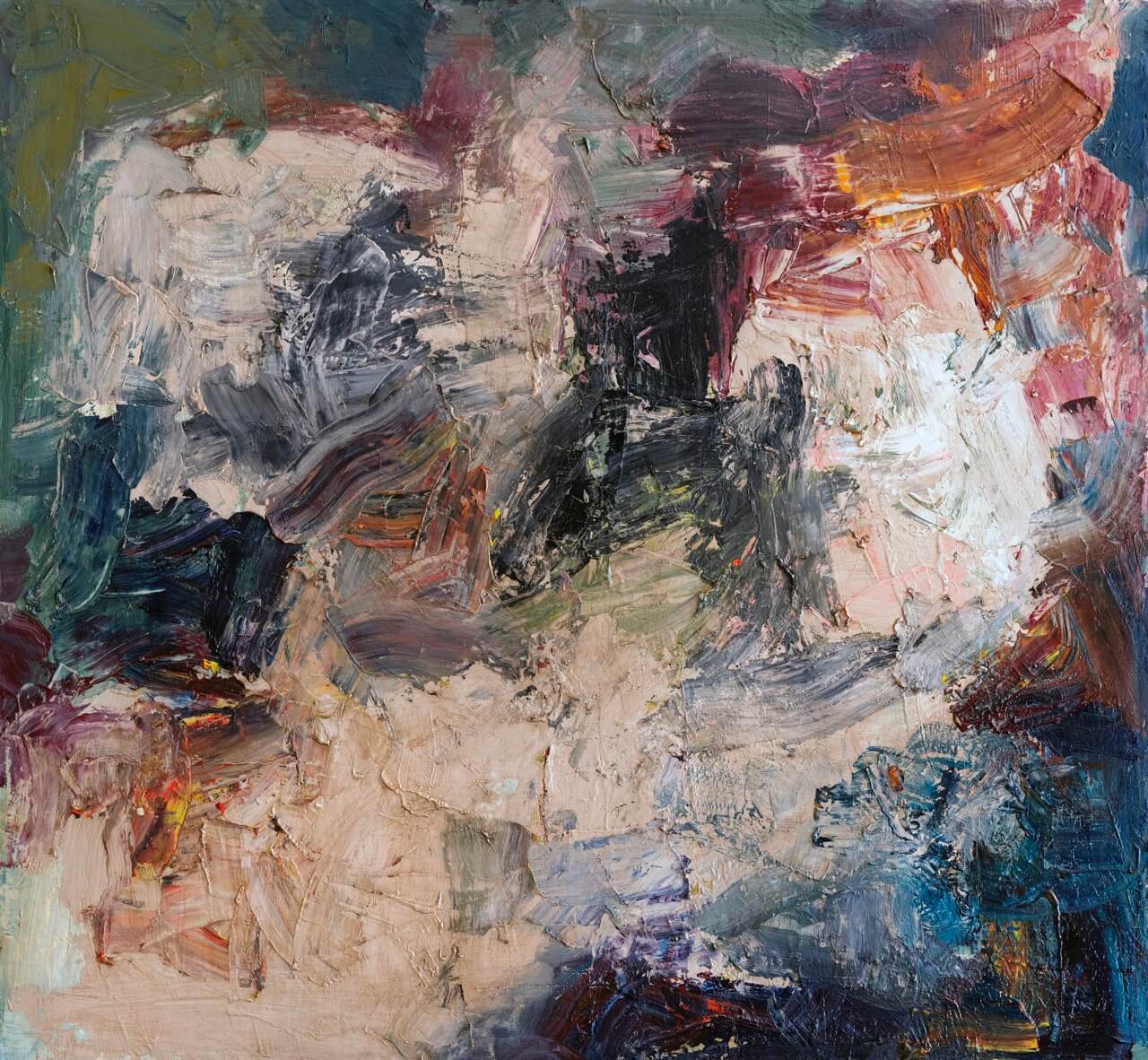
Ushangi Khumarashvili ‘Abstraction’. Canvas, oil. 110x120. 2006. This work is part of ATINATI Private Collection
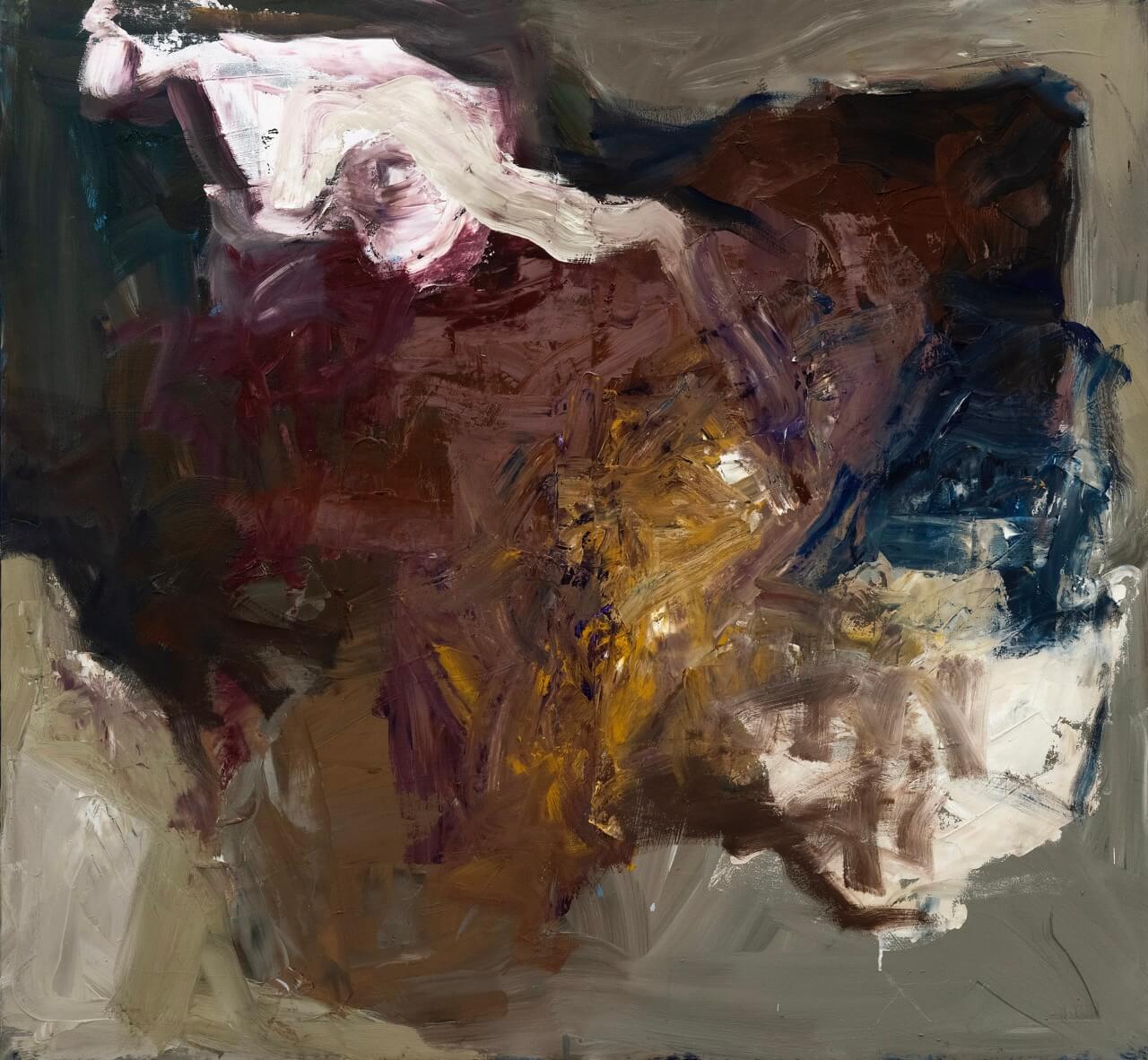
Ushangi Khumarashvili ‘Abstraction’. Canvas, oil. 130x140. 2006. This work is part of ATINATI Private Collection
The paintings of Ushangi Khumarashvili are particularly “Georgian” and unique. It would be difficult to relate his approach to any current or classic abstractionist in the local setting. The artist transcends “conformist-nonconformist” abstraction through his paintings and multimedia expressions. His goal was self-exploration as he strived to create something. The parallels with the abovementioned Western abstract tendencies of the 1940s-50s, can be seen as “quotes” from a famous novel, yet, in Ushangi’s case they are deeply personal. His figurative, objectless chimeras are based only on his autobiographical narrative.
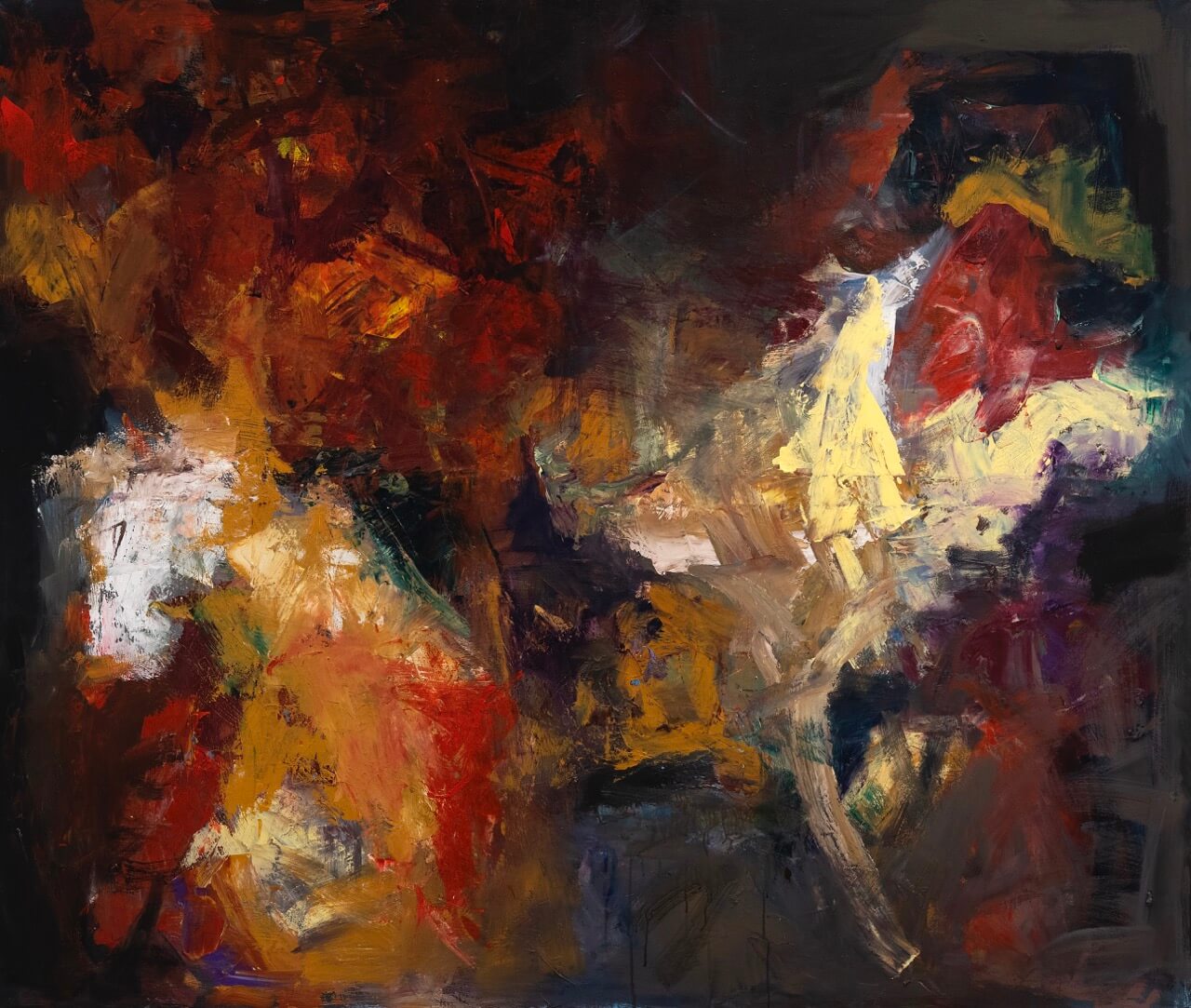
Ushangi Khumarashvili ‘Abstraction’. Canvas, oil. 170x200. 2006. This work is part of ATINATI Private Collection
Ushangi Khumarashvili wrote in his diary: “The silhouette of a centaur exists within me. The space from the deserted windows. The bed terrifies me. The wind blows outside the windows. I find the night shelters. The entire road in Telavi is dark” (2000, July 18). This passage encapsulates the artist’s internal world, reflecting a legendary creature in real life, with an entirely different body and memory- a theme reflected in his paintings, where the visible world dissolves into a haze, and contrasting spots suggest a blurry, elusive reality. The centaur, as a mythological figure, serves as a metaphor for the artist’s own identity and creative process, fusing mythological thinking, color, and drama as a trinity at the core of his art.
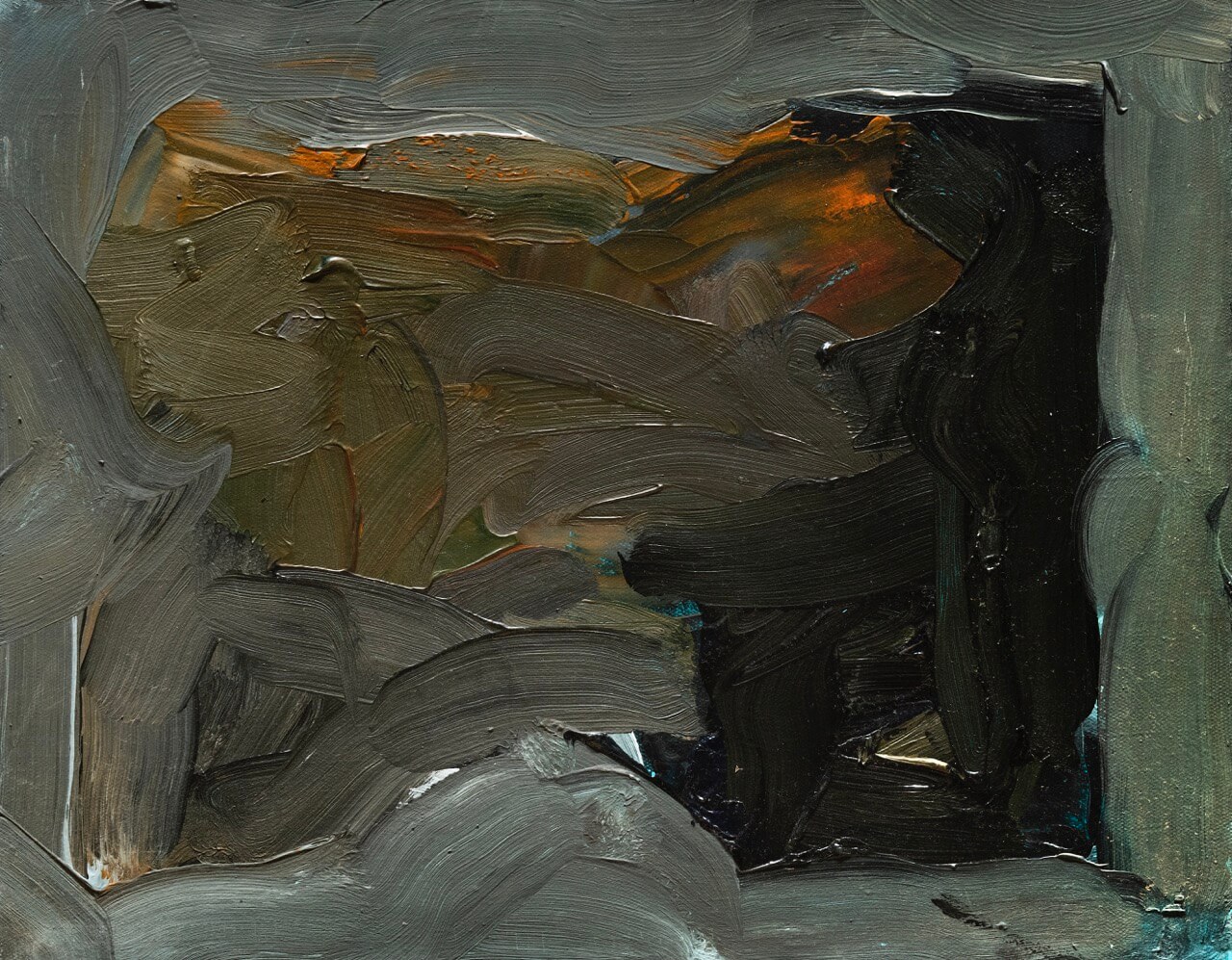
Ushangi Khumarashvili ‘Abstraction’ Oil on canvas 40x50. 2014. This work is part of ATINATI Private Collection
P.S.
In this way, Ushangi Khumarashvili embodies the spirit of a contemporary artist who reflects the concept of a roaming centaur in the realm of abstract painting. With equal dramaturgy, he paints both the old and the modern, the mythological and the everyday, using his vivid, dynamic palette.